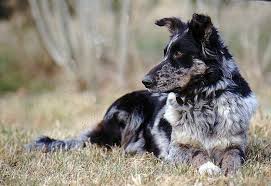
Cane di Oropa
Conditions of detention
Cane di Oropa dogs are best suited for rural or suburban environments where they have plenty of space to roam and work. They are highly active and require regular physical and mental stimulation.
Useful Fact: These dogs thrive in environments where they can perform tasks, reflecting their strong herding instincts and need for purposeful activity.
Nutrition and diet
A balanced diet with high-quality dog food, rich in proteins, fats, vitamins, and minerals, is essential for the Cane di Oropa. Their diet should support their active lifestyle and muscular build.
Useful Fact: Due to their high energy levels, these dogs may benefit from a diet formulated for active or working breeds, ensuring they get the necessary nutrients to maintain their stamina and overall health.
Health
Cane di Oropa dogs are generally healthy but can be prone to certain hereditary health issues such as hip dysplasia and joint problems.
Useful Fact: Regular veterinary check-ups and maintaining a healthy diet and exercise regimen can help prevent and manage health issues common in the breed.
Grooming and care
The Cane di Oropa has a dense double coat that provides insulation against harsh weather conditions. Coat colors can vary, including shades of black, brown, and gray. Regular brushing helps to keep their coat healthy and reduces shedding.
Useful Fact: During shedding seasons, more frequent brushing is necessary to manage excess hair and keep their coat in good condition.
Education and training
Intelligent and eager to work, the Cane di Oropa responds well to positive reinforcement training methods. Consistency and a firm but gentle approach are key.
Useful Fact: Early socialization and obedience training are crucial to ensure they develop good manners and are well-adjusted to various environments and situations.
Toys and entertainment
Cane di Oropa dogs enjoy toys that challenge their intelligence and physical abilities. Interactive toys, puzzle games, and fetch toys are ideal.
Useful Fact: Engaging them in regular play and mentally stimulating activities can prevent boredom and reduce the risk of destructive behaviors.
Safety
Given their active and curious nature, it is important to supervise Cane di Oropa dogs during outdoor activities and ensure they are in a secure area to prevent them from wandering off.
Useful Fact: Providing a secure, fenced area for them to play and exercise can keep them safe and prevent accidents.
Accessories
Sturdy collars, leashes, and harnesses designed for medium to large-sized dogs are suitable for the Cane di Oropa. Comfortable bedding and durable toys are also recommended.
Useful Fact: Using a harness during walks can provide better control and prevent strain on their neck, especially important given their strength and energy.
Socialization
Early socialization helps Cane di Oropa dogs become well-rounded and confident. Exposing them to different environments, people, and other animals is key.
Useful Fact: Positive socialization experiences can help manage their natural protective instincts and ensure they are comfortable in various settings.
Travel and Transportation
Cane di Oropa dogs can be good travelers if acclimated to it early. Using a secure and comfortable crate or carrier during transportation ensures their safety and reduces stress.
Useful Fact: Regular breaks during long journeys help them stay comfortable and hydrated, reducing travel-related anxiety.
Behavior and psychology
The Cane di Oropa is known for being loyal, intelligent, and hardworking. They form strong bonds with their family and are generally good with children and other pets.
Useful Fact: Understanding their need for companionship and mental stimulation can help in creating a balanced and happy environment for them.
Legal aspects
Ownership regulations for Cane di Oropa dogs may vary by region. Adherence to local laws regarding pet registration, vaccinations, and leash laws is important.
Useful Fact: Keeping updated identification and health records helps ensure compliance with legal requirements and safeguards their wellbeing.


